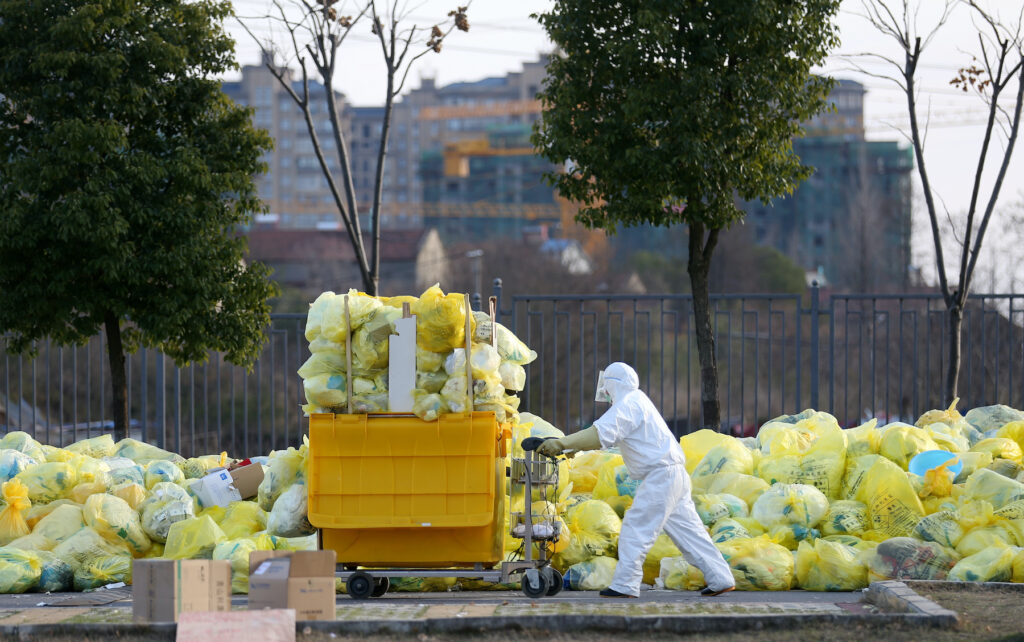In 2020, I was one of the millions who contracted COVID-19. At the time, I was quarantined in my college room, and like many others, I experienced the isolation that came with being sick during a global pandemic. But amidst all that, something else caught my attention—the sheer amount of plastic waste that surrounded me.
Every day for a month, meals were delivered to my room in plastic trays. Disposable cutlery, water bottles, plastic-wrapped condiments—everything came in single-use packaging. It was understandable; the situation demanded strict hygiene, and plastic seemed like the safest option. But after a few days, I started noticing how much plastic was piling up in my room, and it bothered me. I was stuck in a strange paradox. On one hand, I was grateful for the safety measures; on the other, I felt like I was drowning in plastic waste.
When I finally tested negative and was able to fly home, the plastic problem followed me. The flight attendants handed out protective gear wrapped in plastic. Disposable masks, face shields, sanitizers in tiny plastic bottles—it was everywhere. Again, I understood the necessity. We were in the middle of a global crisis, and protecting ourselves was the top priority. But deep down, I wondered: could we have done things differently?
Could Some of the Plastic Waste Have Been Avoided?
Looking back, I can’t help but think that while some plastic use was unavoidable, a lot of it could have been minimized. For example, during my quarantine, we were served meals in plastic trays that were thrown away after each use. What if they had used biodegradable or compostable materials instead? I’ve seen alternatives like plates made from cornstarch or sugarcane that break down easily and don’t harm the environment. Surely those could have been an option?
I also think that if recycling infrastructure had been better prepared, we could have diverted some of that waste. I remember seeing plastic waste bins overflowing in the quarantine center, and I knew that none of that plastic was going to be recycled. If there had been a system in place specifically for collecting and recycling pandemic-related waste, the impact could have been reduced.
What can be done to fix this?
Now that the urgency of the pandemic has passed, we need to focus on reducing the environmental damage caused by all that plastic. While some changes are already underway, there’s much more we can do to tackle plastic pollution head-on.
One significant step is increasing the use of compostable and biodegradable packaging. Instead of relying on single-use plastics, we can adopt alternatives like compostable food containers and cutlery made from materials such as bamboo, cornstarch, or bagasse (sugarcane fiber). These materials break down naturally and won’t contribute to the waste piling up in landfills for decades. Encouraging businesses to shift to these options will help reduce our plastic footprint.
Another essential move is adopting a circular economy approach. In this model, products are designed to be reused, recycled, or composted, ensuring that resources remain in use for as long as possible. We need to develop systems where items like personal protective equipment (PPE) can be made reusable, such as washable face shields or gowns that can be sterilized and used again. Implementing such reusable solutions can significantly cut down on single-use waste.
Stricter regulations on plastic use must also be enforced. Governments should introduce or reintroduce bans on single-use plastic items, pushing industries to find sustainable alternatives. For instance, banning plastic cutlery, straws, and plates can drive innovation in the production of eco-friendly products. Consumers can also play a role by supporting policies that restrict the use of non-recyclable plastics and by choosing products with less packaging.
On an individual level, we can all make changes to minimize plastic waste. Simple actions like carrying reusable bags, bottles, and cutlery can drastically reduce the demand for single-use items. We can also opt for products with minimal or recyclable packaging and avoid items wrapped in excessive plastic. Educating ourselves and others about the long-term impact of plastic pollution is key to driving collective action.
While the damage caused by pandemic-related plastic pollution is significant, there are clear steps we can take to fix it. By focusing on compostable alternatives, adopting circular economy principles, enforcing plastic regulations, advancing recycling technologies, and making conscious choices as consumers, we can start to reverse the tide of plastic waste and move toward a more sustainable future.
Moving Forward
When I think back to those days in quarantine, surrounded by plastic trays and disposable gear, I realize that the pandemic taught us a lot about our relationship with plastic. Yes, we were dealing with an unprecedented crisis, and safety had to come first. But now that the crisis has passed, we have a responsibility to fix the environmental damage that’s been done.
We can’t change the past, but we can learn from it. As we move forward, I hope that the lessons we’ve learned about plastic waste during the pandemic will push us toward a more sustainable future. Whether it’s through better materials, improved recycling, or simply making more conscious choices in our daily lives, we can all do something to help repair the damage and reduce our reliance on single-use plastics.
It won’t be easy, but if the pandemic taught me anything, it’s that we’re capable of adapting quickly when we need to—and now, more than ever, we need to adapt for the sake of our planet.

